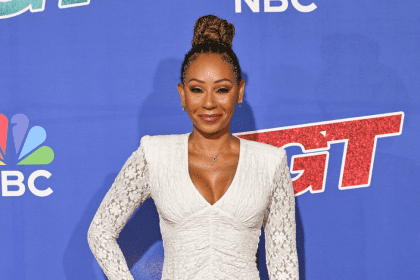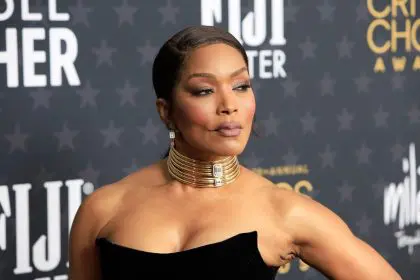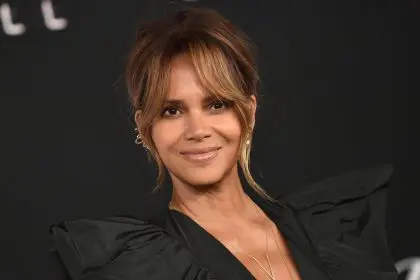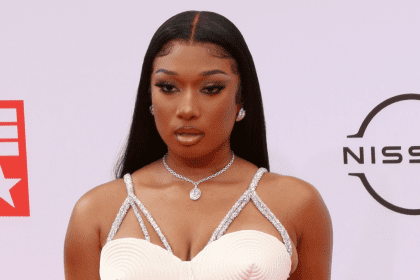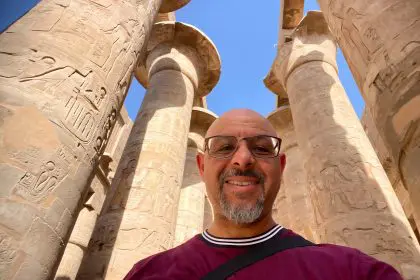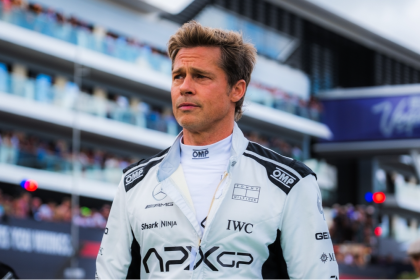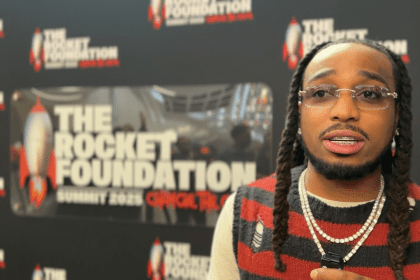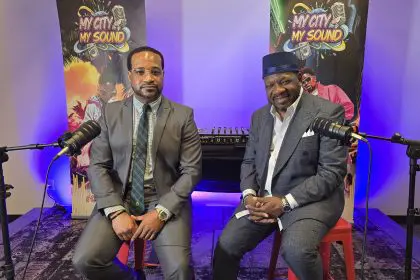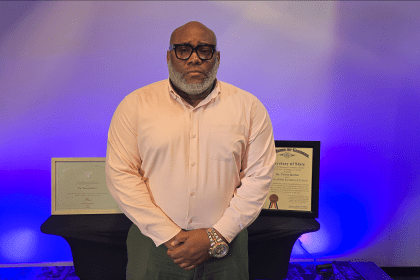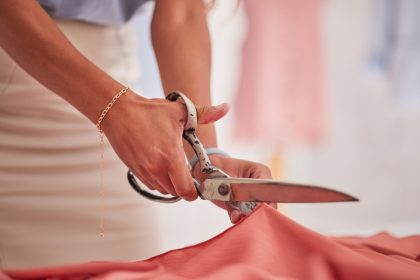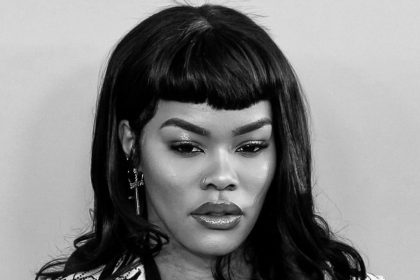Drawing inspiration from her background in design, art, teaching, and dance – entrepreneur and socially conscious designer Mary DeArment, Founder of Scarves By Mary DeArment, creates luxury silk scarves in various sizes that not only carry powerful social messages, but the company also gives back to those in need in areas such as education, healthcare, and child welfare.
By using socially conscious words/phrases like “peace,” “world citizen” and “gender equality” as design elements, DeArment constructs visual puzzles, exquisite patterns and geometric artwork that are eventually silkscreened onto stunning, buttery, contemporary silk scarves.
What is DeArment’s overall vision? To design a full line of gorgeous high-end luxe scarves created to empower women of all ages and skin tones and invite interesting, even thought-provoking conversations about the messages embedded within the artwork. In addition, DeArment also collaborates with a variety of nonprofits and customers can donate 5% of their purchase to any nonprofit of their choosing. A true win-win.
From her online boutique to the “Swag Bags” of the American Music Awards, Scarves By Mary DeArment are not only accessorizing famous musicians and women around the country, but they also offer a vehicle for women to literally “own their word” – making a definitive statement in fashion, style, personality and social awareness. Here’s more on Mary DeArment’s incredible background and inspirations, sage advice on beginning a design business, and exciting plans for her new 2016 scarf collection.
Do you think that there a any widely held misconceptions about what you do? If so, what are they and how do you work to dispel them?
Some people think my scarves are expensive. This is not a misconception: this is either a mismatch of income to product or a difference of perceived value. This is my art and just like any artistic piece, it’s my time, creativit, and sweat. When you combine my artwork with my collection’s incredible craftsmanship and silk material, I believe the price reflects the passion, artistry, positive message, and quality.
A common reaction to my artwork is, “How do you come up with these designs?” I never know quite how to answer that question. I could give a technical explanation of my process…just ask! My brain is rather peculiar and sees things differently.
How did you arrive at this career choice? Was it a deliberate decision or a gradual and natural evolution?
A natural evolution combined with unintentionally closed doors has led me to my present career as an artist. However, what has been consistent throughout my life is an almost obsessive creative preoccupation. I applied my creativity professionally as an artist’s model, teacher, and dance therapist. Outside of work I have drawn, painted, danced, choreographed, sewn, participated in theatre, made soap, developed unique clothing patterns, formulated courses, and designed greeting cards and other printed materials. My first foray into the working world of art was art licensing; in that context I explored various media for my emerging word art including animation, stained glass, quilts, embroidery, stationery, textiles, wall paper, framed prints, and laser cut wall art.
When I began to work with words in a circle, people began to comment on the mandala quality of the designs. When I adapted this work to design in squares, suddenly the tiling option added another level of movement and complexity to the artwork. Already being a lover of color, silk and scarves, the leap to apply my square and tile designs to scarves was obvious.
For those considering entering this arena, what skill sets do you recommend mastering? What traits are most conducive to success?
Follow your passion. Trust your gut. Find mentors. Stick with your instincts when deciding on the quality of your product. Know what you don’t know and find others who have the skills you lack. Be flexible. Be prepared to make mistakes, many of which will be costly—but expect to learn from each mistake. Whatever you are hoping to achieve, it will take longer than you think. Welcome critics; you need to hear what they have to say. Know what de-stresses you and make it part of your daily routine. Eat well. Get enough rest. Allow yourself to love and be loved.
How do you stay at the leading edge of your craft?
I’m always creative: I can’t help it. I honestly cannot remember ever in my life being bored and the reason, I believe, is that I find creative solutions to otherwise boring experiences.
I don’t follow trends; I blaze my own trail and set my own trends. I love color, patterns and the shape and diversity of the human form. Clothes interest me because they accentuate or mask the person’s shape. My personal rules in fashion include three basic principles: comfort and wearability, do I feel confident in the outfit I’m wearing, and of course, can it be accessorized with a scarf.
As for what looks good on me, I have my own peculiar style … and it works for me. My mother has always worn and continues to wear arty clothes and no makeup, so I guess I’m a chip off the old block.
How do you map out your goals? How do you measure your success?
My goals are constantly changing and so is how I measure my success, so flexibility is key to goals and success. Initially my goal was simply to create a line of quality scarves made with designs from words and I equated success with sales. From day one, the creative end was easy for me and as I’m a prolific and fast designer. However, my challenge was selecting which designs to turn into scarves.
Then I had to learn how to refocus my energies on marketing those scarves. Refining my target market and brand definition has helped me choose which words (causes) to turn into designs. Now, I have found my true vision and my goal is to build a scarf brand which communicates messages that truly resonate with the customer and to collaborate with selected nonprofits. I realize that true success is measured by visibility and customer engagement. If I can create a buzz, even a movement, about what I’m doing, if nonprofits are reaching out to work with me and requesting my involvement with their causes, and if clients are sharing their scarf-sparked conversations and feel empowered by the words they wear – then I am truly successful.
Who do you consider to be your peers in your field? Who do you see or use as examples to emulate?
Eileen Fisher designs clothes for comfort and runs her company democratically, responding to the particular challenges of women’s family/work demands. (She actually has a person on staff in charge of work-life balance!) Her line of clothes are ideal to accessorize with scarves, so in addition to appreciating the practicality and comfort of her clothes, I also find a synchronicity with our products.
Karen Staser, the founder of the National Women’s History Museum, is a woman who followed her passions and pursued a vision. Her commitment to women and desire to celebrate us resonates with me. Karen founded the NWHM to serve as a catalyst for cultural change on a national basis.
Name two of your top role models: one from your industry and one from outside of it.
Audrey Hepburn with her poise and dancer’s carriage epitomizes elegance and refinement. Isadora Duncan, the mother of modern dance, represents unconventional self-expression and the free spirit of all arts pioneers.
Anne DeArment, my upbeat artist/musician mother, taught me how to see beauty, subtlety, pattern, and color in both nature and fine art. She further encouraged me to be imaginative and expressive through any and all arts. (NOTE: My mother published a book of her own poetry in 2015 at the age of 87. Brava!)
Name three books, works, performances, or exhibits that changed how you view life and/or yourself.
Rudolf Laban was a movement theorist who did most of his work between the world wars. In my twenties I spent two years studying Laban Movement Analysis (LMA), a theory which starts from the premise that there is order in the universe and it can be understood; likewise there’s a comprehensible order to the way the human body moves, in time, space, energy and intent. The beautiful complexity of both expressive and functional movement fascinated me. My study of LMA was profoundly validating as I realized there were many ways to bring dance and nonverbal communication into my professional life. Considering the applications of LMA to choreography, bodywork, personality assessment, cross cultural studies, workplace efficiency, and psychotherapy eventually led me to become a Dance/Movement Therapist. What has stayed with me as I moved away from the mental health field is a deeply internalized sense of the connection we all experience physically and expressively with our own bodies, with our environment and with each other. As an artist who works with symmetry and geometry, I continue to apply Laban’s ideas of order, angle and shape in ways I certainly didn’t anticipate when I first studied his work.
My collective experience at the Pennsylvania Academy of Fine Arts and other arts institutions in Philadelphia were also highly formative. My favorite studio at PAFA was really more of a hallway than a room. The space was populated with white casts of famous sculptures including Winged Venus and Michelangelo’s David and wooden easels surrounded the modeling platform. The occasional comments of the teachers, the smell of charcoal and paper, the distinctive acoustics of the large stone space all inspired me as a model and occasional student. Each art school, community class, and private artist for whom I modeled had a certain atmosphere of calm and creativity. The way someone looks when they are translating to paper or canvas is unique; there is a kind of focus, awareness, and openness—there’s an interaction between subject and artist, which is quite compelling. During a personal time of my life, I drew self-portraits, – literally hundreds of them – to understand myself better, to see who I was.
Why do you consider continued learning important?
Continued learning is life. The alternative is stagnation and arrogance. In all areas of my life, I acknowledge my need to learn more. As a designer, I’m always trying new approaches. As an entrepreneur, I have countless new skill sets I must gather and hone. Meaningful interaction on every level must be informed by dynamic learning. Relationships between individuals, businesses, and nations must either grow or diminish. Likewise, the relationship between a brand and its consumers must also be responsive to needs, social changes, and economic realities. My designs are all about engagement with the mind. The hidden word must be extracted by mental effort and imagination; the hidden word itself has meaning. The symbolism of distortion, mirroring, support, overlap, and sharing as they relate to the concept in the word are endlessly meaningful.
What affirmations do you repeat to yourself that contribute to your success?
In terms of my work: “I trust my own design and color sense.”
Regarding non-design tasks: “I can learn this enough to intelligently delegate it.”
What role does technology play in your day-to-day life? How do you utilize it?
I use my smart phone, iPad, and laptop daily. Although the initial designs are sketched by hand, I render them on the computer early in the process so the images in their incipient and refined forms are handy to share using my various devices. I monitor my emails/texts on the go and am as likely to be working on a design both in my studio and in unexpected places.
Photography also plays a vital role in my business. My fashion photographer handles the shoots and editing for me. The visual images are key to my business and play a large role in engaging my customers both on my website and social media.
Although resistant to Facebook for a long time, I have come to appreciate it. On my personal Facebook page, I pick and choose what interests me, without regard for my business. I find myself frequently informed, inspired, and amused by my Facebook feed. As for my business – Facebook, Instagram, and Twitter have become incredibly valuable tools in marketing my brand and engaging with my customers. I utilize social media consultants to keep me up-to-date on my followers, feeds, and posts.
What software, app, or other technological innovation has made the biggest difference in your life and/or career?
Illustrator is my bread and butter. I also use InDesign a lot and Photoshop a bit. I’m teaching myself Blender in my spare time! When waiting in line I often play Blendoku. I believe this satisfying little game has developed my color sense.
Please define your personal brand.
Mary DeArment is a socially conscious luxury scarf brand empowering women, promoting discussion, and offering a vehicle for women to literally own their word – making a definitive statement in fashion, style, personality and social awareness.
What is your favorite vacation destination and why?
I grew up in New Jersey and Pennsylvania so I love the change of seasons, despite living 20 years in Florida. My favorite vacation destinations are the northern woods in the fall, a Pennsylvania garden in the spring or a Colorado garden in summer. Let me awaken to wind in the trees, let me walk through crunchy fallen leaves on an unpaved path, let me rejoice with a casual bank of blooming nasturtiums, let me gather daffodils in the copse, let me smell spring lilacs—these simple experiences give me joy.
What keeps you inspired?
Dance (doing it, not watching it). Nature, especially clouds, the woods, and music.
For more, visit Scarves by Mary Dearment. Find Mary Dearment on social media – IG:@DeArmentScarves T:@DeArmentScarves F: /ScarvesByMaryDearment






